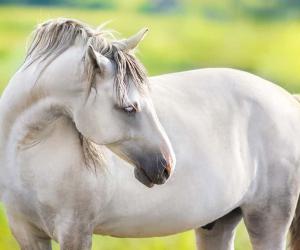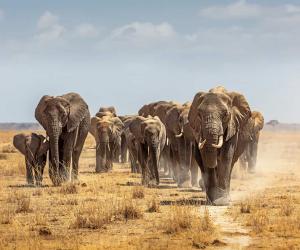Baby Corn Snake: 8 Pictures and 8 Incredible Facts
Corn snakes might just sound like any other snake to some, but to those who know how great they are will tell you differently. They are docile snakes that are a great help on farms and in general. Not only are they nonvenoumos, they keep the rodent population under control and lead quiet lives away from most people. Baby corn snakes are adorable and come in so many vibrant colors. Below are some baby corn snake pictures and incredible facts to help you fall in love with them if you aren’t already!
1. Baby Corn Snakes Hatch From Eggs
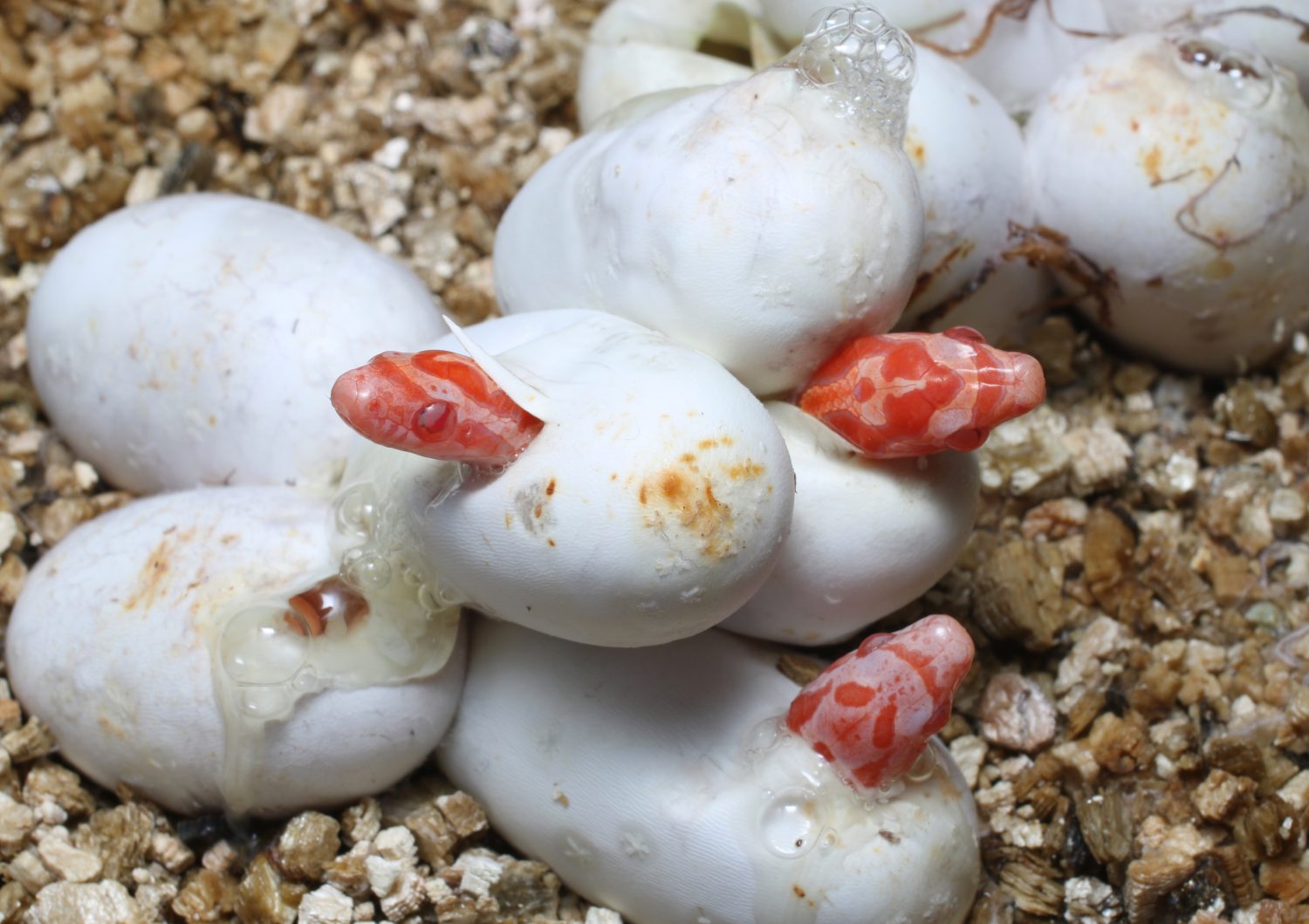
Some snakes, like garter snakes are live-birthed from the womb, while corn snakes are hatched from eggs.
©Dan Olsen/Shutterstock.com
In the spring, corn snakes mate and lay eggs one to one and a half months later. The eggs will then hatch in approximately two months after that. The female corn snake can lay anywhere from 2 – 34 eggs in one clutch. She lays them in a secluded and moist location like rotting tree stumps or wet leaves. The moisture helps keep the eggs primed for hatching.
2. Baby Corn Snakes Have an Egg Tooth or Specialized Scale For Hatching
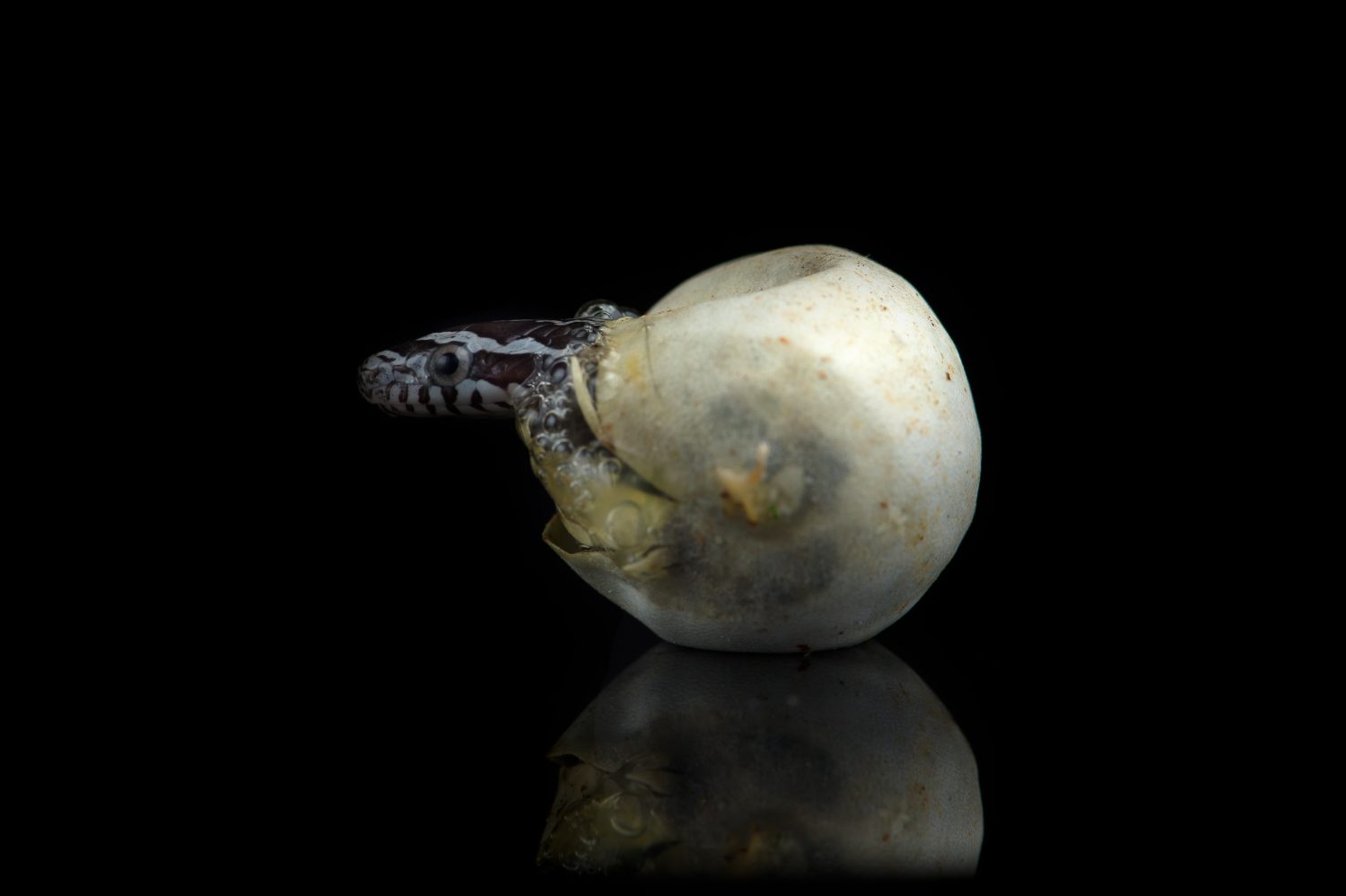
Baby corn snakes need help getting out of the rubbery egg and use a special scale.
©PetlinDmitry/Shutterstock.com
Each baby corn snake has a specialized scale to help them break free from their egg. The egg tooth is an actual tooth that grows in the front center of their upper mouth and juts out. It helps them slice a hole in the rubbery egg and make their escape. Though, they don’t escape quickly. Once they have made a hole to poke their heads through, they will back down into the egg again to absorb the egg yolk which provides them all the nutrients they will need in the very early days of their lives outside of the egg. Once they have absorbed all of the yolk, they make their grand entrance into the outside world.
3. Baby Corn Snakes Don’t Climb Trees
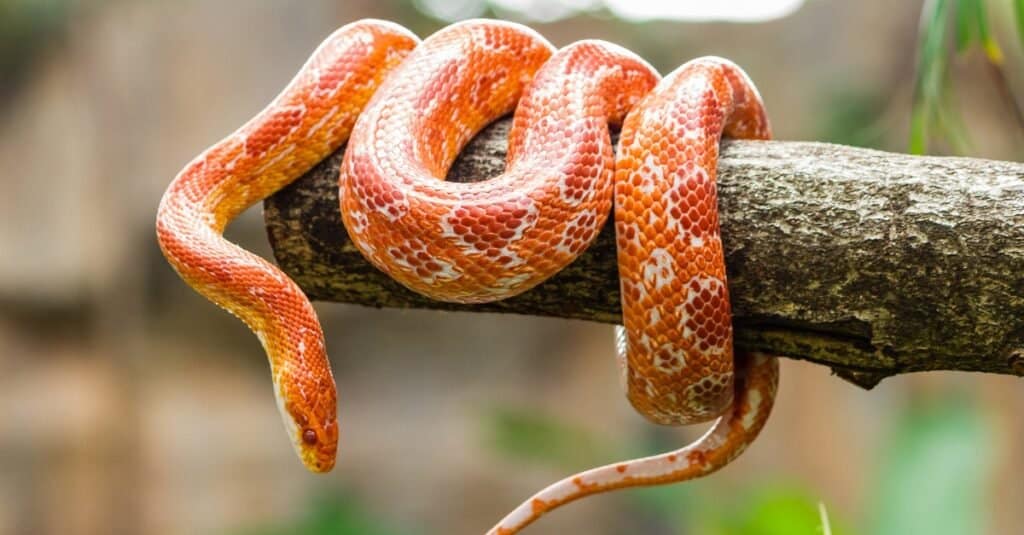
Corn snakes are capable of climbing building walls, fences and trees.
©iStock.com/bugphai
Like toddlers, baby corn snakes think they can do everything an adult can but they are clumsy. Baby corn snakes can climb but do so poorly, at least for the first four months. They are still very small at that age since they are only 8 – 12 inches when they hatch. They may try but tend to do more falling than climbing. Once they get a bit older, longer and less clumsy, they will learn how to climb like adults do. Adults are seen high up in trees, on the outside of buildings and other hard to reach spots. They do this to hunt for eggs in bird nests and to escape predators. They are not actually arboeal snakes so must learn to climb and learning takes time and practice.
4. Corn Snakes Are Not Venomous
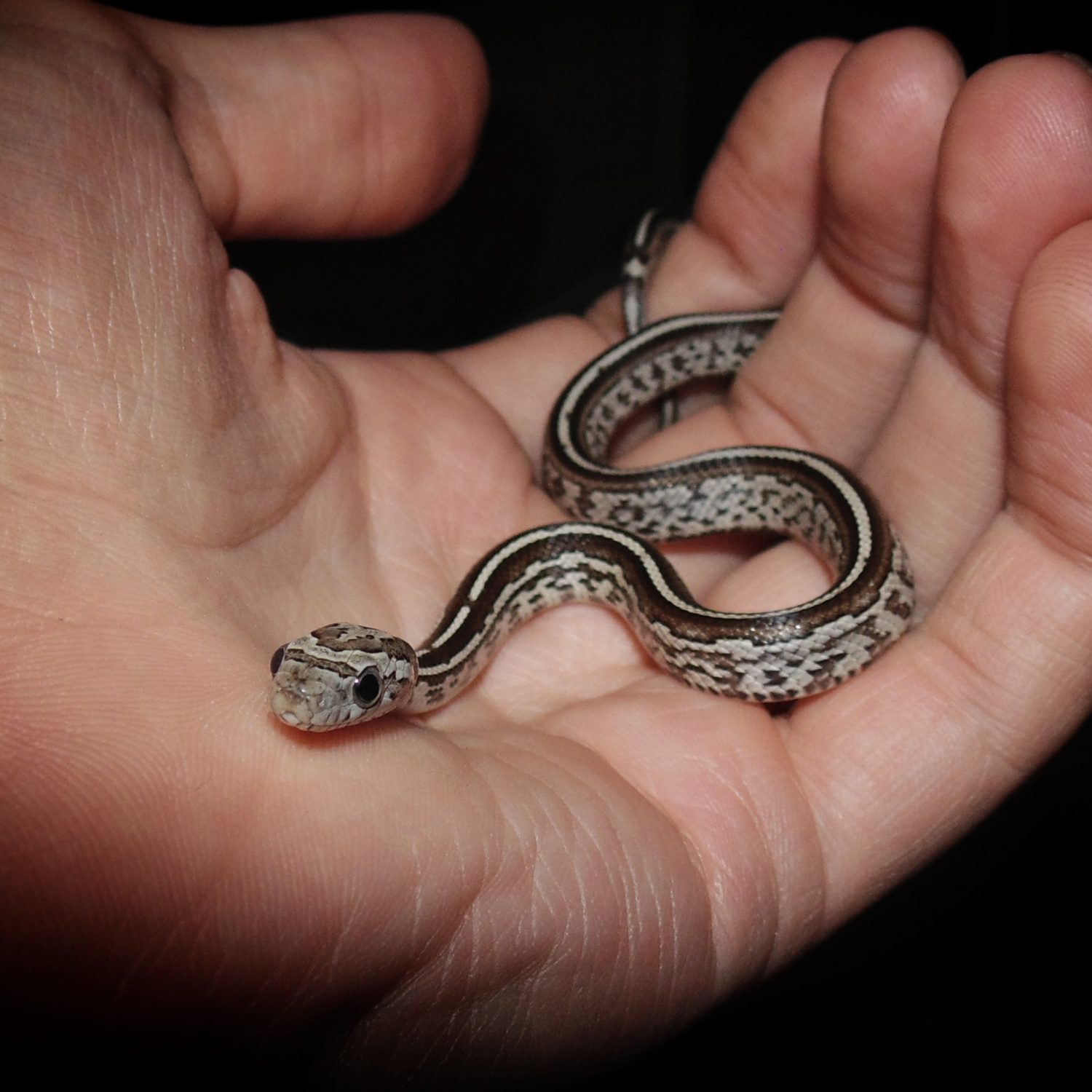
Corn snakes can bite but are not venomous.
©PauloPadrao/Shutterstock.com
All species of corn snakes are not venomous but can bite and do so to catch prey at times. They are not a snake who relies on its bite force or venom to secure a meal. Instead, they are constrictors. This means they catch prey, then tightly coil around it, squeezing it until it runs out of oxygen and dies. Then, they swallow the prey whole using hinged jaws. They have also been known to swallow live prey whole.
The corn snake’s diet typically consists of rats, mice, bird eggs, small birds, lizards, frogs and toads. In captivity, they strictly eat mice or pinkies.
5. There Are Over 800 Morphs or Colors of Corn Snakes
Corn snakes come in many different colors and it depends on where they live in the U.S. for the common morphs to occur. In Florida they have more of a pinkish color, but it can vary from one part of Florida to another. Some corn snakes look similar to copperheads to the untrained eye, while others may be bright orange and yellow. Many morphs exist in the snake hobby. They all have the same general shape and round pupils, like we have.
6. Corn Snakes Pretend to be Rattlesnakes to Scare Predators
As you can see in the video, even small baby corn snakes come equipped with the ability to tick their tails quickly as if they were a rattlesnake. Of course, corn snakes pose very little risk to anything they can’t fit in their mouths and they are finicky eaters. As somewhat small, nonvenomous snakes without fangs, they don’t have much of a defense mechanism against predators or humans who may try to hurt them. They have to act tougher than they are to avoid becoming dinner for another animal. Very few animals want to take their chances with a rattlesnake!
7. Corn Snakes Aren’t Big Fans of Parental Care
Not everyone is cut out to be a parent. Once you see the female corn snake painstakingly lay egg after egg, there’s no wondering why she doesn’t stick around. Her job is finished until the next mating season when the entire process will begin again. As we have already covered, the baby corn snakes are more than capable to handle life on their own as soon as they hatch. Until then, it’s up to nature to decide whether they live or die. Many clutches will be lost to predators before they have developed in those two short months.
8. Wild Corn Snakes Are Mistaken for Copperheads Frequently
Sadly, the harmless corn snakes get a bad rap when they are mistaken so frequently for copperheads by untrained eyes. Copperheads are pit vipers and look considerably different than corn snakes, even when they are close to the same color. The patterns are different, especially along the bottom and sides. If the head is viewable, that is a great indicator of which is harmless and which is better to avoid. The head of the corn snake is narrow and the jaws are flush against the body. A copperhead’s head is triangular and its jaws stick out in a muscular fashion away from its body. Still, it can be confusing, especially if you can only see a small portion of the snake. So many corn snakes are killed when they are mistaken for copperheads every year.
The photo featured at the top of this post is © PauloPadrao/Shutterstock.com
Discover the "Monster" Snake 5X Bigger than an Anaconda
Every day A-Z Animals sends out some of the most incredible facts in the world from our free newsletter. Want to discover the 10 most beautiful snakes in the world, a "snake island" where you're never more than 3 feet from danger, or a "monster" snake 5X larger than an anaconda? Then sign up right now and you'll start receiving our daily newsletter absolutely free.

